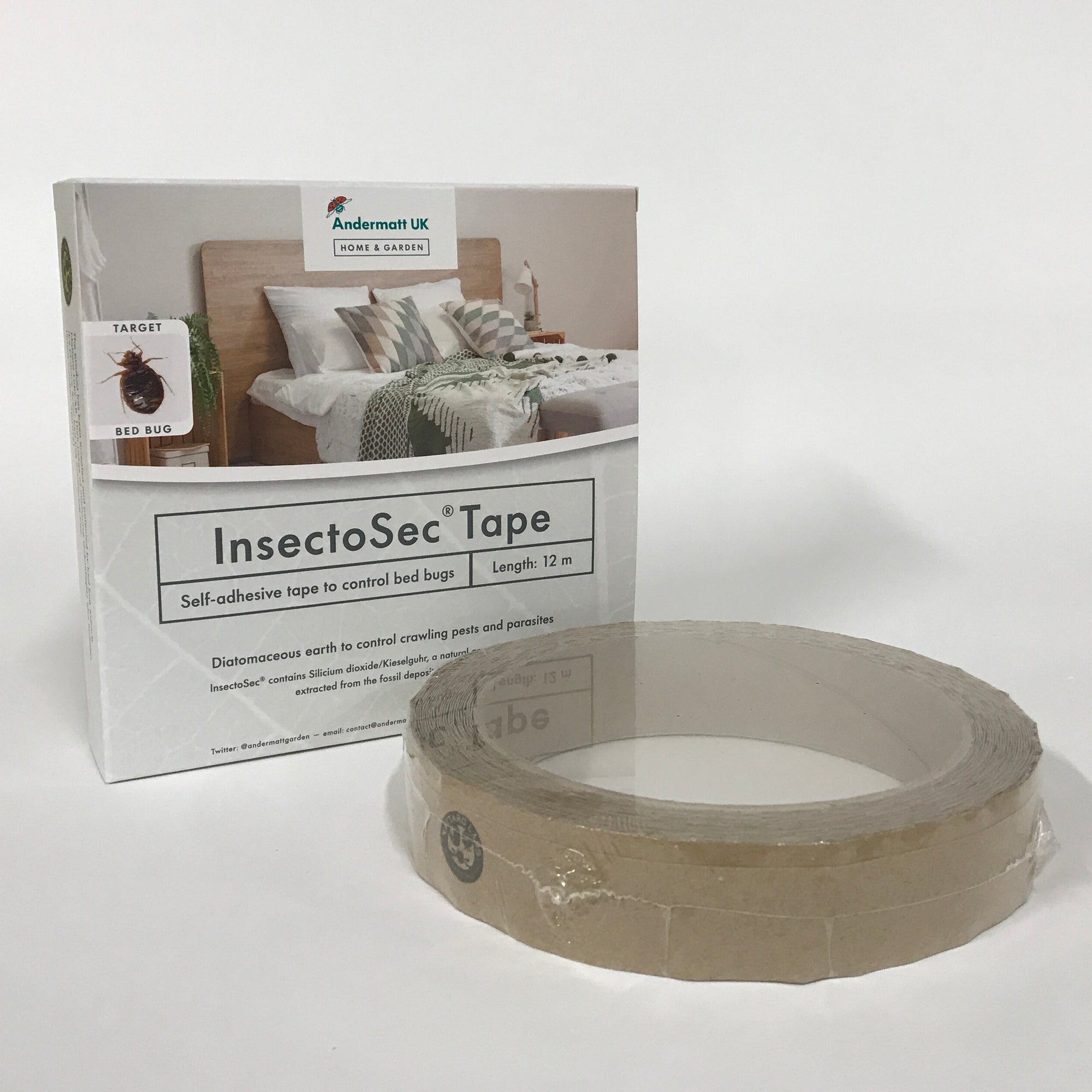Why control bedbugs?
Bedbugs (or bed bugs, Cimex sp.) are a group of parasitic insects. They feed on blood of animals and humans. Bedbug feeding can result in red bite marks over your skin where they have bitten you. Whilst the bite itself does not hurt, the bedbug bites can be very itchy and may become swollen and painful.
Bedbugs mostly feed at night, on exposed areas of skin they can easily access. They prefer to live close to their host and so will spend the daytime hidden within the bed frame, or on furniture and fittings around the sleeping area.
The fight against bedbugs is a constant one. The risk of bedbug infestation to a house is a constant one and is not affected by how clean the house is. Bedbugs happily hitch a lift on suitcases from infested hotel rooms or can survive hidden in second-hand furniture as it is moved between properties.

How to identify if you have a bedbug infestation?
Bedbugs are most often active at night. The most reliable way to identify the presence of bedbugs is by finding one. This can be difficult because of their nocturnal activity and so using a monitoring trap, for example Nattaro Scout can be used to achieve this. The most common first step to identifying the presence of bedbugs however is when you find the bite marks all over your skin.
Signs of bedbugs:
- Red bite marks on your skin
- Black spots from bedbug faeces (up to 1mm in size) left on the mattress whilst feeding
- Clusters of black spots from bedbug faeces in hiding places; mattress seams, headboards, bed frame and bedside furniture
- Locate adult bedbugs (4-5 mm in length) hidden in cracks around the mattress, bed or bedroom furniture
- Trap bedbugs in monitoring traps
What are bedbugs?
Bedbugs are a group of insect species (Cimex sp.) which feed on blood. They are small oval shaped insects, which appear flat before feeding and then more bloated after a blood meal. The insect goes through five nymph life stages, requiring a blood feed between each development stage. The bedbug can develop from egg to adult in one moth under favorable conditions, which can result in rapid population growth.
Unable to fly, they have to walk although they are still highly mobile. Bedbugs can walk across carpet, up walls and across ceilings. They can be found resting during the daytime in aggregated groups close to where they feed.
How to treat a bedbug infestation?
The first step to treating bedbugs is to correctly identify this is what is causing your problem. Monitoring traps specifically for attracting and catching bedbugs are readily available. If you have bedbugs, they will be caught in the trap, you then need to decide your next steps ether:
- Consult a professional pest controller who will talk you through options. These may include heat treatments, chemical insecticide treatments or InsectoSec sprays followed by installation of InsectoSec Tape.
- Treat the bedbug infestation yourself. There are a range of treatment products available, always use products approved for use in the UK and always read the label before use.

Bedbug prevention is always better than cure, some steps to consider include:
- Do not keep clutter around your bed. Bedbugs like to hide close to their hosts, this will give them more places to hide.
- Check second hand furniture being brought into your house for signs of bedbug activity (clusters of black spots [bedbug poo]).
- Check clothes carefully if you have been staying away somewhere know to have bedbugs
Home treatment for bedbugs should include:
- Wash affected bedding and clothing in a hot wash (60°C).
- An alternative to a hot wash is to put the items in a bag and then into a freezer (-17°C) for 4 days. After defrosting, if necessary items can be washed as normal.
- Vacuum the room with the infestation, including underneath and behind furniture. Contents of the vacuum should be disposed of immediately afterwards to avoid the bedbugs escaping from the vacuum. Ideally this should be frozen before disposing to kill the bedbugs.
- Various consumer grade insecticides are available for bedbug treatment. These should be used with care, always read the label
- After bedbug insecticide treatment InsectoSec Tape can be applied to the underside of the bedframe. This will kill any remaining or re-infesting bedbugs.
Discover more and buy InsectoSec Tape here.
Why use InsectoSec Tape?
Because bedbugs prefer to stay close to their food source, positioning InsectoSec Tape on the underside of the bed puts the solution right where it needs to be. It will attract and kill the bedbugs as they try to move around the bed and its simple and safe design means that you will not even know it is there.
InsectoSec Tape has been designed around and understanding of bedbug behaviour:
- Located on the bed, near to their feeding site, it is ideally positioned without impacting you
- Its winged fold design creates tight gaps which the bedbug prefer to rest in for protection
- Presence of the InsectoSec within the tape means bedbugs are not aware its presence
- A difficult pest to target with insecticide applications because of its hiding places or ability to have long periods between blood feeds, InsectoSec Tape brings the pest to it and has a persistent effect which lasts 12 months



